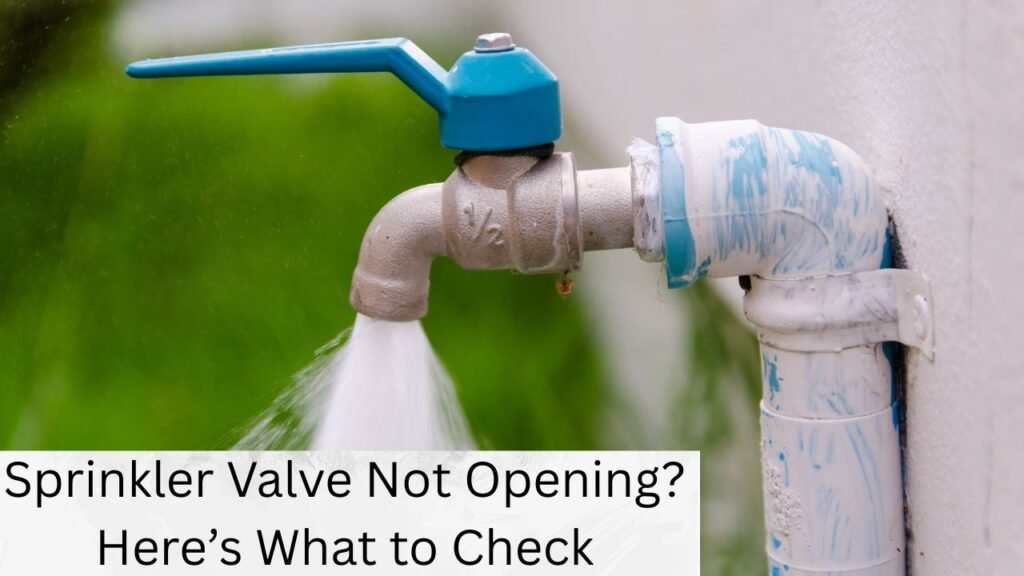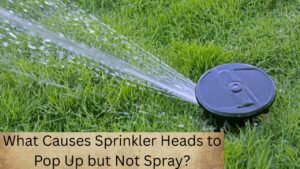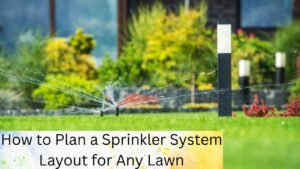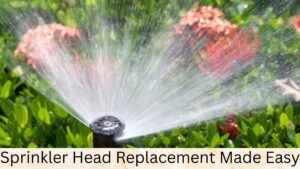Is your sprinkler system not starting one of the zones—or any of them at all? Don’t worry, you’re not alone. Many homeowners face this issue every spring or summer. And the good news? Most of the time, it’s fixable without calling a professional.
Here are the most common causes:
- Electrical issues with the controller or solenoid
- Dirt or debris clogging the valve
- Water pressure problems
This guide walks you through how to fix it yourself, step-by-step. Let’s get started.

What Does a Sprinkler Valve Do—and Why It Matters
Before you dive into fixing things, it’s super helpful to know what the valve actually does. Basically, the sprinkler valve controls water flow to each zone in your yard. When your controller sends a signal, the solenoid (an electronic part of the valve) lifts the diaphragm inside the valve. This lets water flow through.
Knowing how this works helps you target the issue. For example:
- If the solenoid isn’t getting power, it won’t lift.
- If debris is clogging the diaphragm, it won’t open.
So let’s figure out exactly what’s stopping yours.
Follow These Steps to Find the Problem
We’ll go step-by-step, starting with the easiest checks.
1. Check Your Controller Settings
Sometimes, the issue is as simple as a wrong setting.
- Make sure your controller is set to the right time and date.
- Double-check that the correct zone is scheduled.
- Try the manual override feature—if that doesn’t work either, the issue likely lies with the valve or wiring.
2. Inspect for Wiring Problems
Faulty wiring is a common issue, especially after heavy rain or digging.
- Look at the wire connections both at the controller and at the valve.
- Make sure there’s no visible corrosion, loose connections, or chewed wires (critters love insulation!).
- Gently tug on wires to ensure they’re secure.
3. Test the Solenoid Function
Be safe here: Turn off power to the controller first.
- Unscrew the solenoid from the valve (it’s usually the small cylinder with wires coming out).
- Twist it slightly counter-clockwise. If water flows, the mechanical part of the valve is working fine—your issue is electrical.
Why this works: Manually opening the solenoid bypasses the controller signal. So if the water runs, your valve isn’t getting the signal it needs.
4. Examine Fuses and Breakers
Still no luck?
- Look at your controller’s manual to find the fuse location.
- Check the main panel for any tripped breakers.
Sometimes, it’s just a blown fuse or a tripped breaker causing all the trouble.
5. Measure Solenoid Resistance
You’ll need a multimeter for this step.
- Disconnect the wires from the solenoid.
- Set the multimeter to measure ohms.
- Place probes on each solenoid wire.
Normal reading? 20–60 ohms.
If it’s way off:
- 0 ohms = short circuit
- Infinite = open circuit
Either way, replace the solenoid.
Dealing with Physical Blockages
Sometimes, it’s just gunk inside the valve.
Steps to Clean a Sprinkler Valve
- Turn off the water supply.
- Unscrew the valve bonnet carefully.
- Remove the solenoid and diaphragm.
- Inspect the diaphragm for rips or debris.
- Clean out any gunk inside the valve body.
- Check for cracks while you’re in there.
- Reassemble carefully, making sure the diaphragm is aligned properly.
Pro tip: If it’s not sealed tightly, you’ll get leaks.
Low Water Pressure Issues
If the valve is trying to open but no water is flowing, pressure could be the issue.
Assess Overall Water Pressure
- Turn on an outdoor faucet to see if the flow feels normal.
- Use a water pressure gauge if you’re unsure.
Troubleshoot the Master Valve (If You Have One)
- Try manually opening the master valve.
- If it stays shut, it’s blocking water to all zones.
Check the Pressure Regulator
- Look for a gauge near the regulator.
- Low reading? Might need to clean or replace it.
When to Call a Professional
You’ve done a lot already. But some problems need a pro.
Call someone if:
- You replaced the solenoid and diaphragm, and the valve still won’t open.
- You’re not comfortable testing voltage or using a multimeter.
- Your valve box is full of water or has visible damage.
Tips to Maintain Sprinkler Valves
Avoid these issues in the future with regular care:
- Inspect valves at the start and end of every season.
- Keep valve boxes clean and free of insects or roots.
- Winterize your system if you live in cold areas.
- Label each valve with its zone number for easy future repairs.
- Replace parts as soon as you notice wear.
Final Thoughts: You Can Fix This
Sprinkler valves are finicky but not impossible to fix. In most cases, it’s a small electrical issue or debris. With a bit of time and this guide, you can figure it out.
Take it one step at a time—and hey, even if you end up calling a pro, at least you’ll know what’s going on.
You’ve got this!




